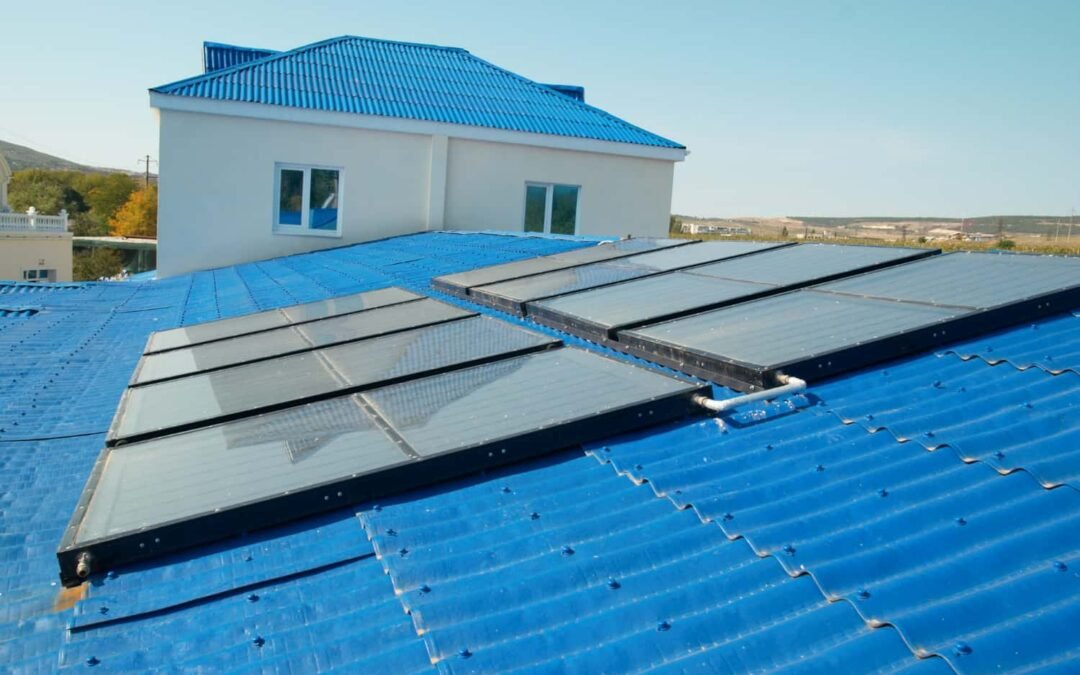With the growing popularity of solar panels as a sustainable energy solution, many homeowners are considering installing them on their roofs. However, before making this significant investment, it’s crucial to ensure that your roof can support the weight of the solar panels. At JAR Roofing Repair, we specialize in preparing roofs for solar installations, ensuring that your home remains safe and structurally sound. In this blog, we’ll guide you through the essential steps to ensure your roof can handle the added weight of solar panels.
Understanding the Weight of Solar Panels
Solar panels are relatively lightweight compared to other roofing materials, but their cumulative weight can still pose a challenge, especially for older or damaged roofs. On average, solar panels weigh between 40 to 50 pounds each, and a typical installation can add 3 to 4 pounds per square foot to your roof’s load. While this may not seem like much, it’s important to assess whether your roof’s structure can support this additional weight over time.
Step 1: Conduct a Professional Roof Inspection
The first step in determining if your roof can support solar panels is to conduct a thorough inspection by a qualified roofing professional. At JAR Roofing Repair, our experienced inspectors will:
- Examine the Roof Structure: We’ll assess the condition of your roof’s framing, trusses, and rafters to ensure they are robust enough to bear the extra weight.
- Check for Damage: Any existing damage, such as rot, leaks, or structural weaknesses, must be repaired before installation. We’ll look for signs of wear and tear that could compromise the roof’s integrity.
- Evaluate Roofing Materials: Different roofing materials have varying load capacities. We’ll determine if your current roofing material is suitable for supporting solar panels or if it needs to be upgraded.
Step 2: Assess the Roof’s Age and Condition
The age and overall condition of your roof play a significant role in its ability to support solar panels. If your roof is nearing the end of its lifespan or shows signs of significant deterioration, it may not be a good candidate for solar panel installation. Key factors to consider include:
- Roof Age: Asphalt shingle roofs typically last 20-25 years, while metal and tile roofs can last 50 years or more. If your roof is older, it may be wise to replace it before adding solar panels.
- Roof Condition: Even if your roof is relatively new, its condition matters. Any issues such as sagging, warping, or damaged shingles should be addressed to ensure the roof can safely support the solar panels.
Step 3: Structural Reinforcement
In some cases, additional structural reinforcement may be necessary to ensure your roof can support the weight of solar panels. This process may include:
- Adding Support Beams: Installing additional support beams or braces can help distribute the weight of the solar panels more evenly across the roof structure.
- Reinforcing Rafters and Trusses: Strengthening the existing rafters and trusses can enhance their load-bearing capacity, providing a solid foundation for the solar panels.
- Consulting a Structural Engineer: For complex or older roofs, consulting with a structural engineer can provide a detailed analysis and recommendations for reinforcement.
Step 4: Roof Layout and Design Considerations
The layout and design of your roof also impact its ability to support solar panels. Factors to consider include:
- Roof Pitch: The angle of your roof can affect both the installation process and the load distribution of the solar panels. Steeper roofs may require additional considerations for safe installation.
- Roof Orientation: The direction your roof faces can influence the effectiveness of the solar panels. South-facing roofs typically receive the most sunlight, maximizing energy production.
- Available Space: Ensuring there is enough unobstructed space for the solar panels is crucial. Chimneys, vents, and other roof features can affect placement and load distribution.
Step 5: Choosing the Right Solar Panel Mounting System
Selecting the appropriate mounting system for your solar panels is essential for both performance and safety. There are several types of mounting systems, including:
- Roof-Mounted Racking: This common method involves securing the panels directly to the roof. The racking system must be compatible with your roof type and capable of distributing the weight evenly.
- Ballasted Mounting: This system uses weighted bases to hold the panels in place without penetrating the roof. It’s suitable for flat roofs but may require additional structural assessment.
- Building-Integrated Photovoltaics (BIPV): These systems integrate solar cells into roofing materials, such as solar shingles. BIPV systems can be an aesthetically pleasing option but may require a different approach to structural support.
Conclusion: Trust JAR Roofing Repair for Your Solar Panel Preparation Needs
Ensuring your roof can support the weight of solar panels is a critical step in the installation process. At JAR Roofing Repair, we provide comprehensive roofing services to prepare your roof for solar panel installation, ensuring safety, longevity, and optimal performance. From professional inspections and structural reinforcements to choosing the right mounting system, our team is dedicated to helping you make the most of your solar investment.
Contact us today to schedule a consultation and learn more about how we can help you prepare your roof for solar panels. With JAR Roofing Repair, you can confidently embrace sustainable energy solutions while protecting your home’s structural integrity.
Table of Contents
Toggle
